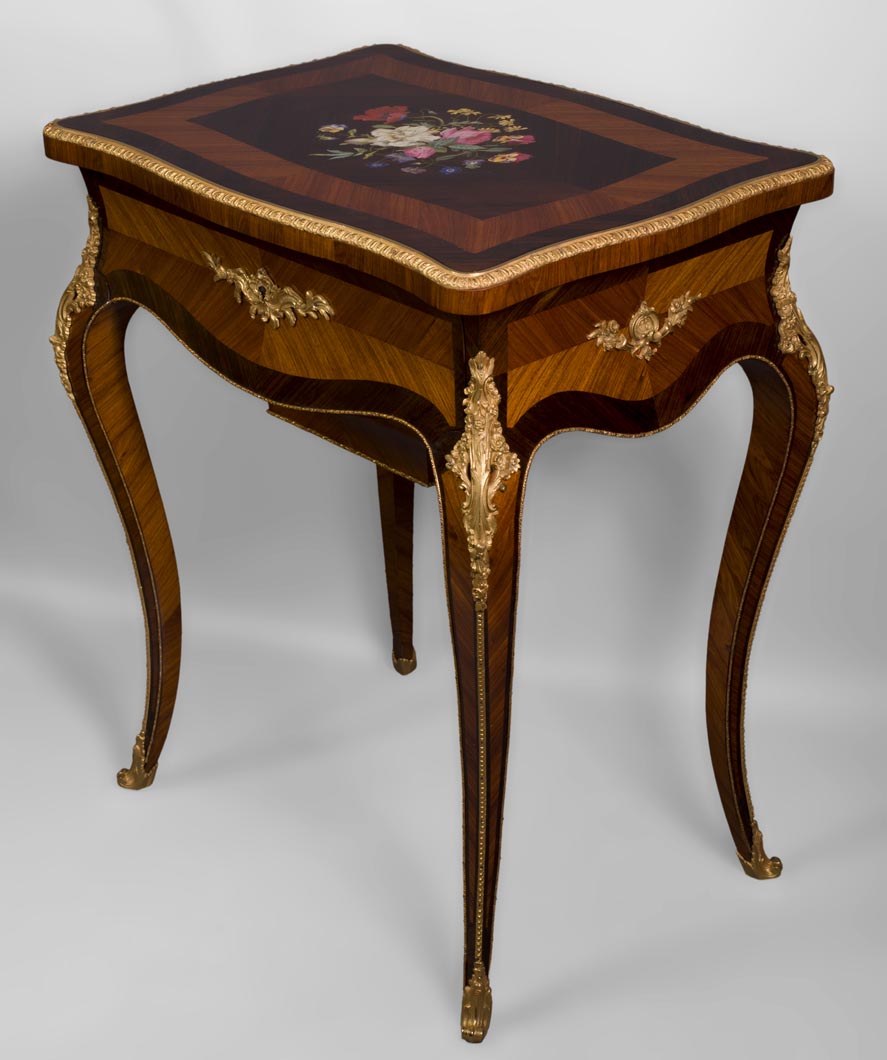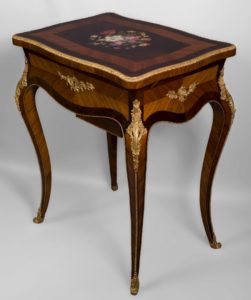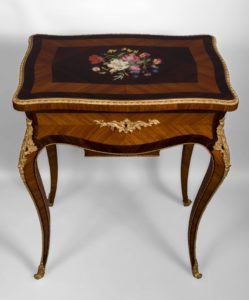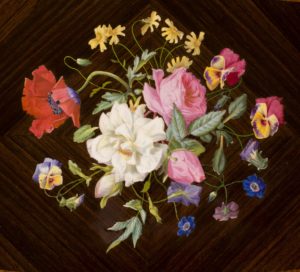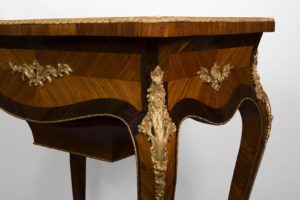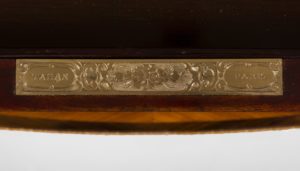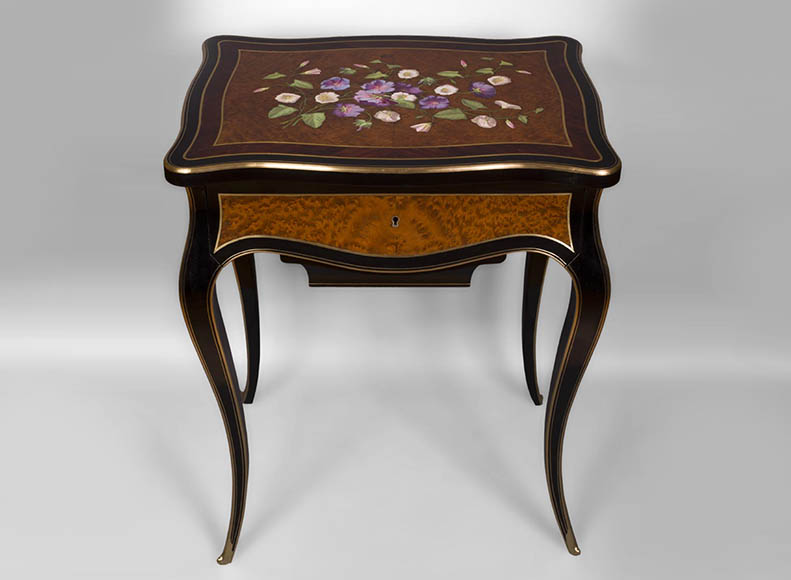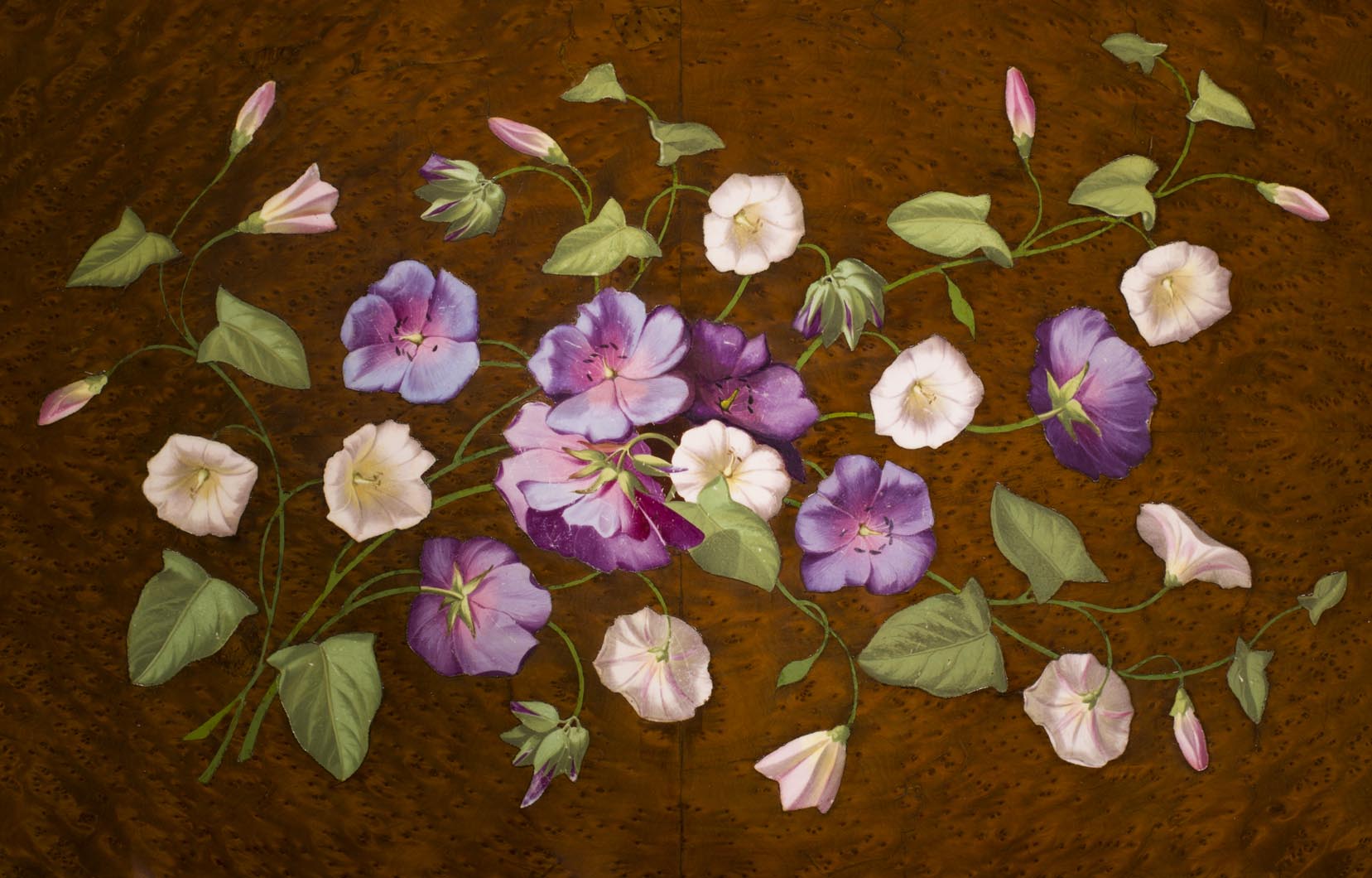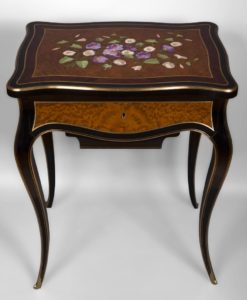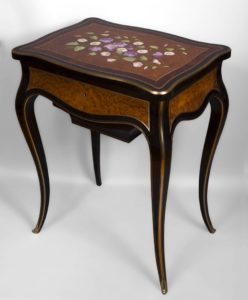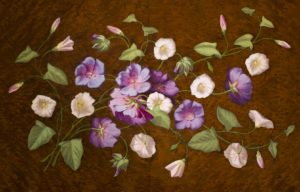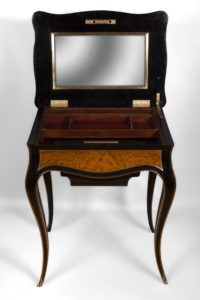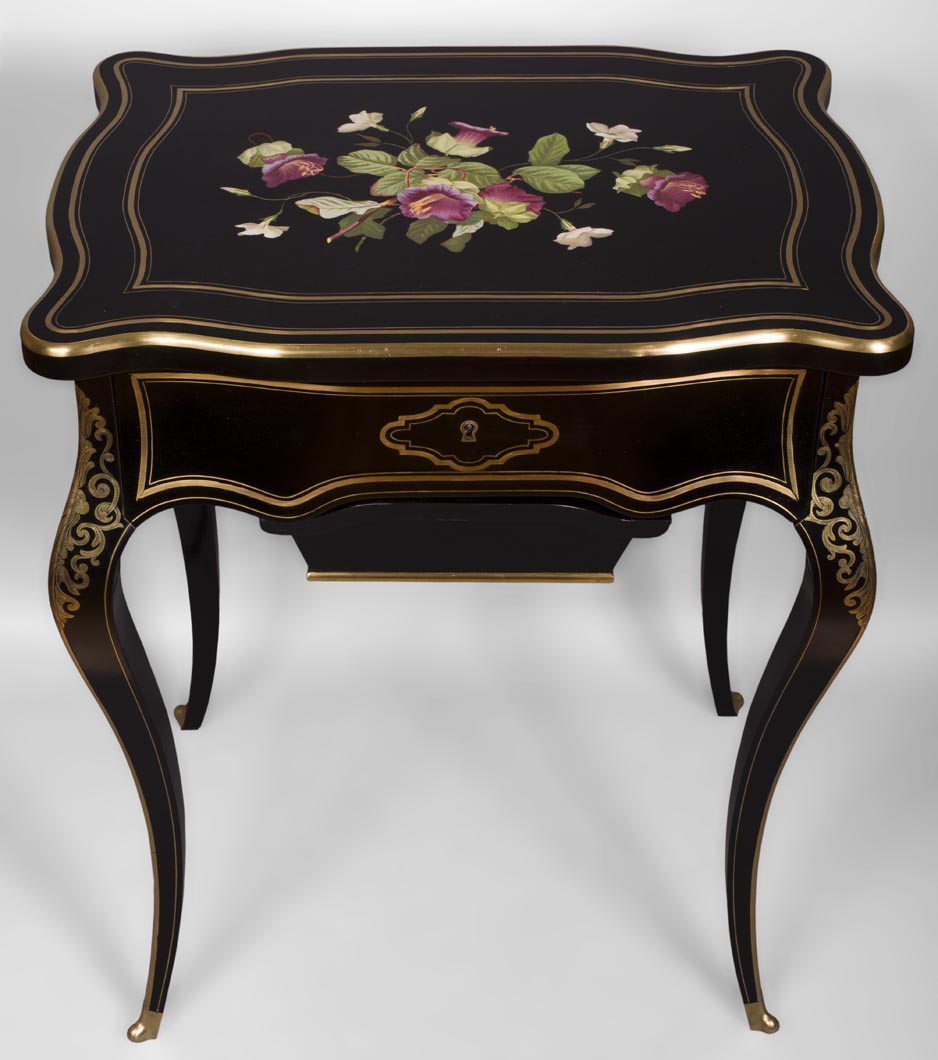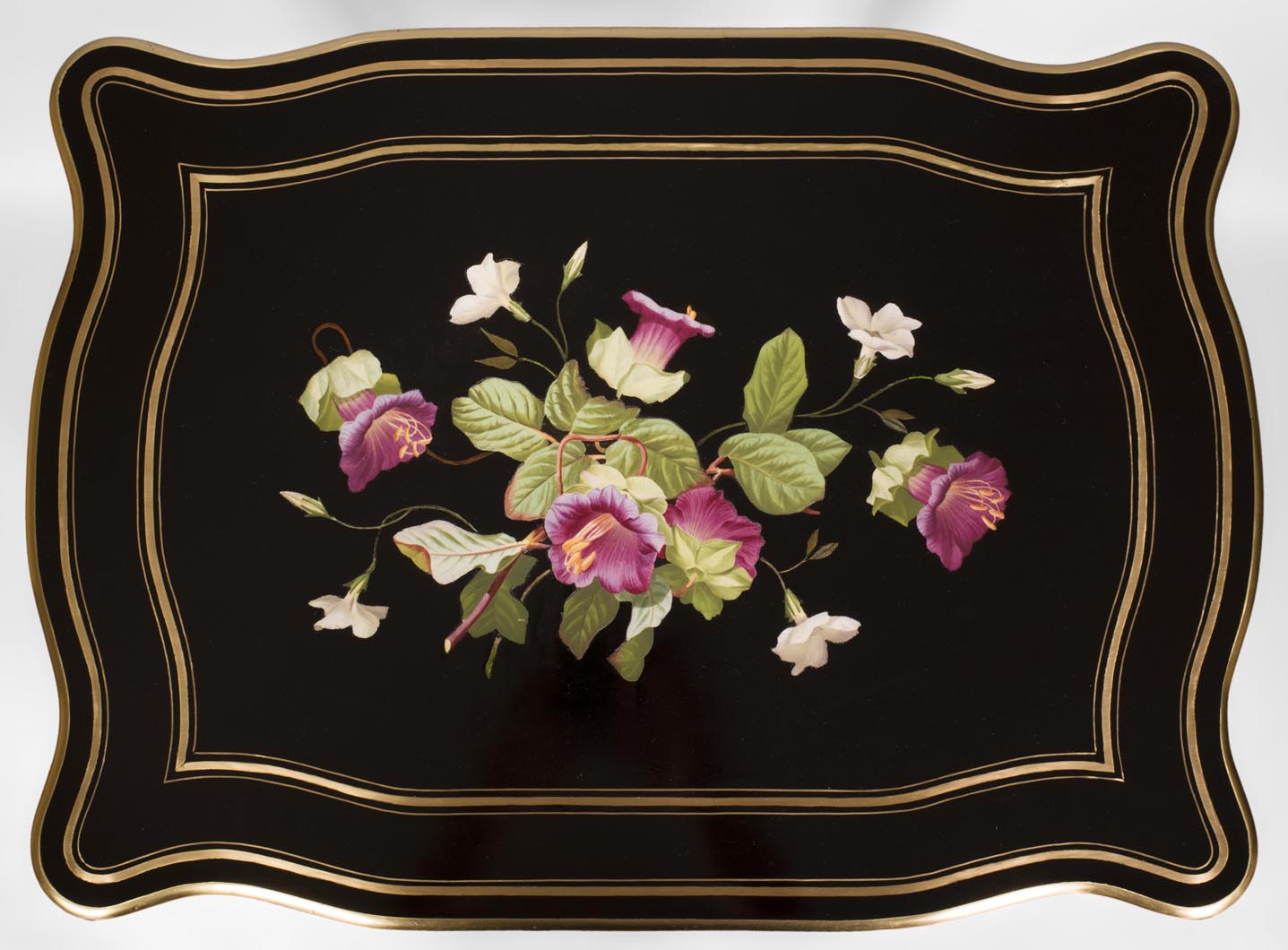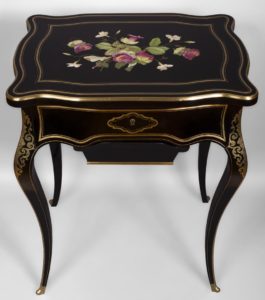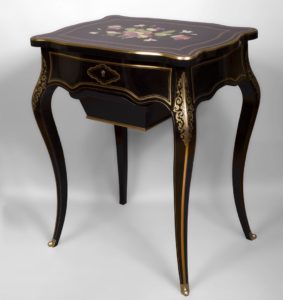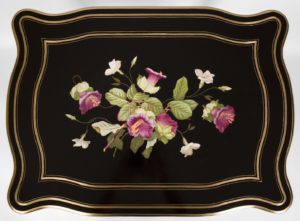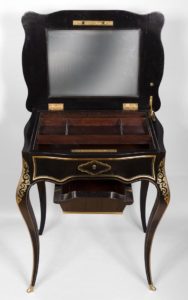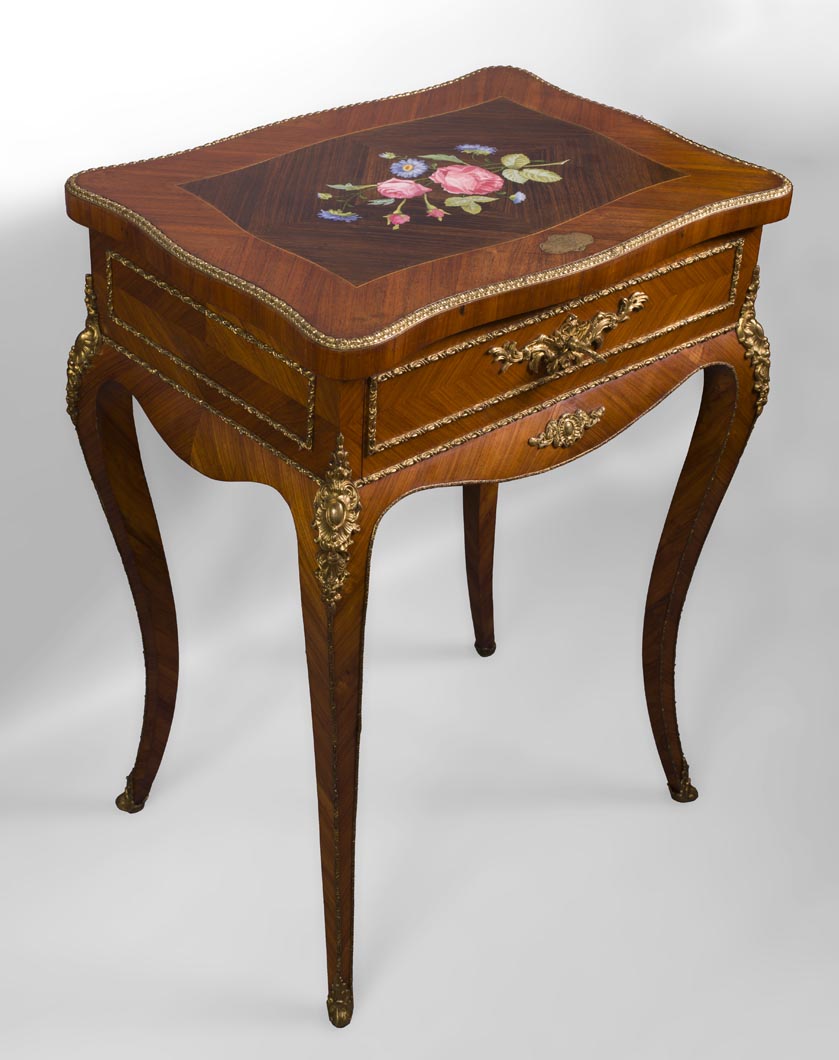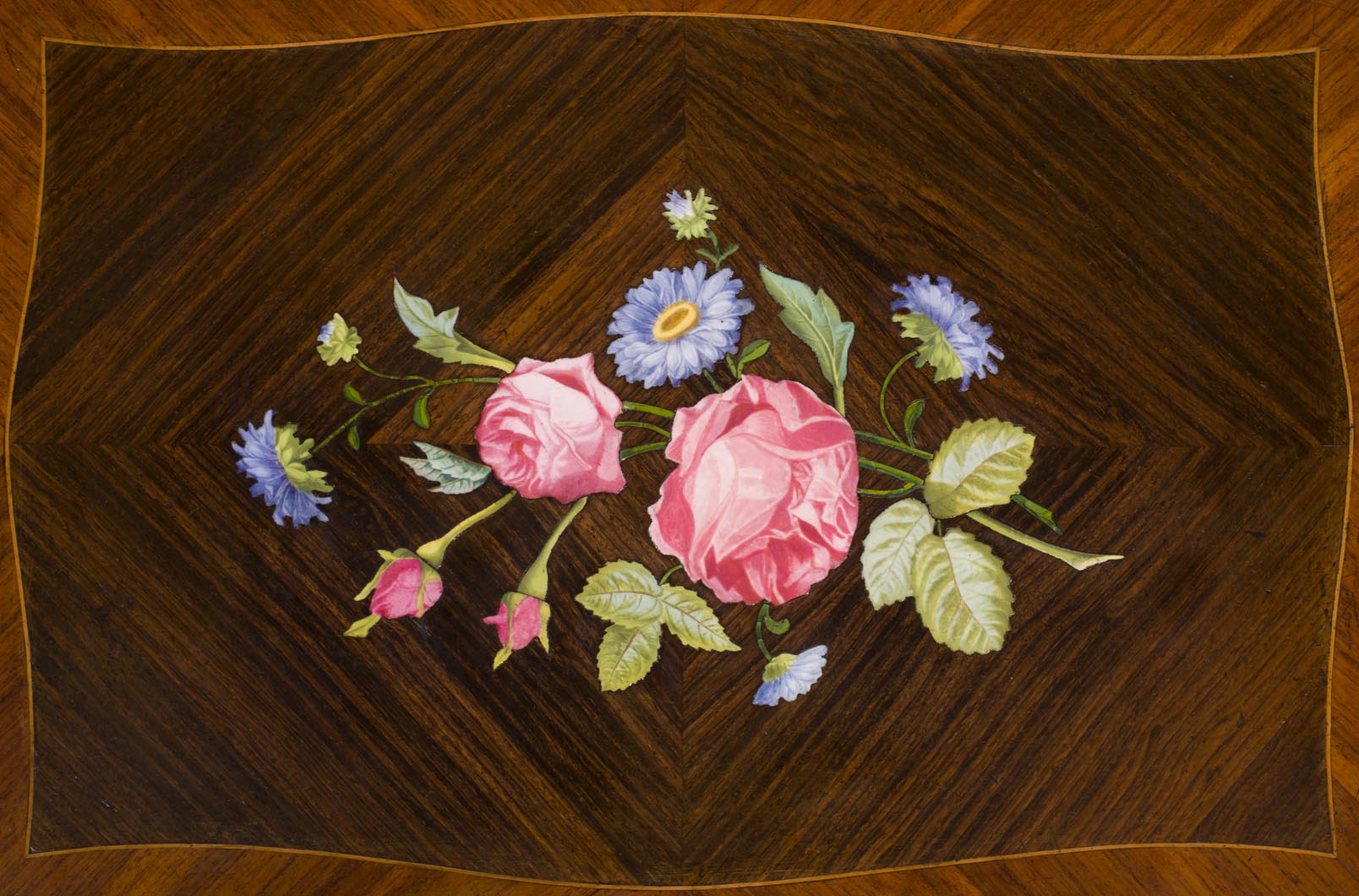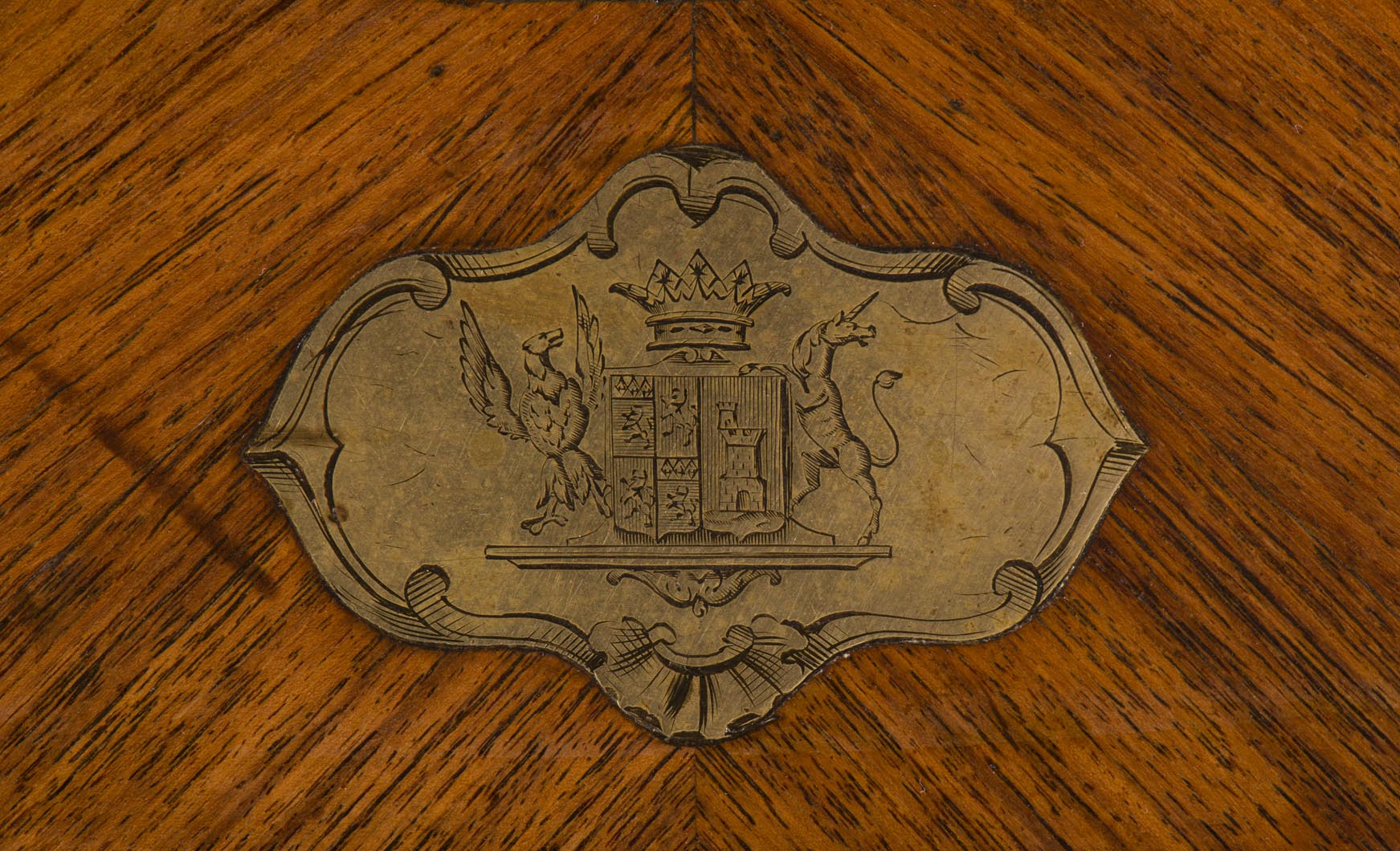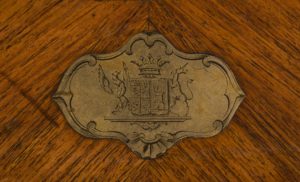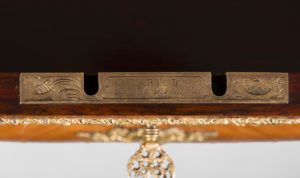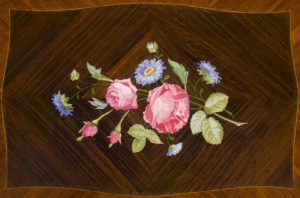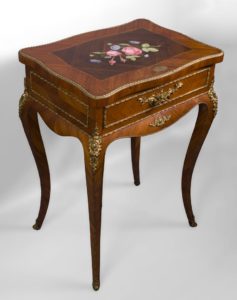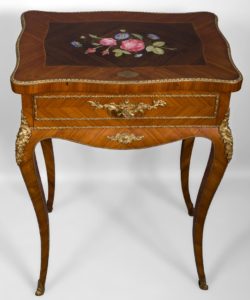This page presents our small sewing tables collection made in collaboration with great artists of the Second Empire, and adorned with a meticulous, delicate decoration of porcelain marqueted flowers, a technic developped by the talented Julien-Nicolas Rivart.
Materials : Rosewood, gilt bronze, porcelain marquetry.
Localisation : France, between 1850 and 1867
Dimensions : H : 75 cm, L : 63 cm, P : 44 cm
Engraved « TAHAN / PARIS »
Sewing table with flowers bouquet
This elegant sewing table was realized by Tahan, “prince of small cabinetmaking”, as a journalist from the Palais de Cristal enjoyed to call him, when he presented a very similar table at the World’s Fair of 1851 in London. Made out of marqueted wood, the decoration of porcelain inlay is a technic patented by Julien- Nicolas Rivart in 1849. The table we present here is thus a rare witness of Tahan’s favorable disposition towards the “Rivart process”.
The base, as well as the belt and the shelf’s borders are also adorned with rococo, gild bronze elements.
Materials : Blackened pearwood, ambonia burl, gilt bronze, brass, porcelain marquetry.
Localisation : France, between 1850 and 1867
Dimensions : H : 76 cm, L : 61 cm, P : 45 cm
Sewing table decorated of campanulas
This elegant sewing table is decorated of flowers in porcelain inlays by Julien-Nicolas Rivart. This floral decooration detaches itself from a ambonia burl veneer, a precious wood, considered one of the most beautiful, characterised by its rich and capricious veins of a design, either reddish, pinky white or yellowish, in a multitude of thin knots which are blending in every possible way.
The shelf, also adorned with a gild bronze edging, is set on four curved feet.
Materials : Blackened pearwood, brass, porcelain marquetry.
Localisation : France, between 1853 and 1856
Dimensions : H : 74 cm, L : 44 cm, P : 39 cm
Sewing table decorated with wild flowers
This elegant sewing table is decorated of flowers in porcelain inlays by Julien-Nicolas Rivart.
The sobriety of this black piece of furniture is only broken by the gild brass arabesques adorning the feet, and briging some luxury to the composition.
Materials : Rosewood, gilt bronze, brass, porcelain marquetry.
Localisation : France, between 1850 and 1860
Dimensions : H : 76 cm, L : 55 cm, P : 40 cm
Engraved « RIVART Bte / Rue de Normandie / n°1 à Paris »
Elegant emblazoned sewing table
This graceful sewing table supports a rare porcelain marquetry by Julien-Nicolas Rivart. The blazons side by side, surmounted by a ducal crown and supported by a unicorn and a griffin, demonstrate an aristocratic commission.
Porcelain marquetry of roses and blue daisies
The mahogany shelf displays a twig of roses and blue daisies, whose vibrant colors are mutually enhancing.
Our sewing table’s shelf is adorned with a gracious bouquet of wild flowers, where the bright colours, pink, green and blue, contrast with the regular marquetry of rosewood.
The coat of arms
Here we can recognize the coat of arms of the family Martin du Tyrac de Marcellus on the right shield “à la tour donjonnée à dextre” (with a dungeon on the right side of the tower). The most famous member of this ancient family was perhaps Lodoïs de Martin du Tyrac de Marcellus (1795-1861), a diplomat and defender of the ancient heritage who worked to have the Venus of Milo in France. The presence of the arms of his family next to another coat of arms indicates a union of two families ; thus, we have here a sewing table offered to the bride. For this reason, it is a particularly elegant piece of furniture with a sophisticated design. Its general form recalls the period of the Regency, and the aristocracy’s joyful coquetry in 18th century.
